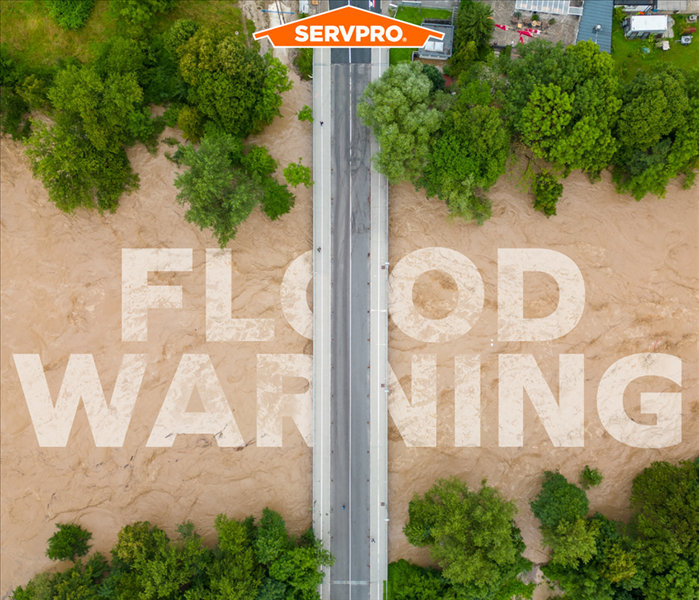Flood Damage Restoration: A Step-by-Step Guide to Recover Your Home Fast
3/18/2025 (Permalink)
 SERVPRO in Denver, CO, provides expert flood restoration with 24/7 emergency response and certified specialists.
SERVPRO in Denver, CO, provides expert flood restoration with 24/7 emergency response and certified specialists.
Experiencing a flood can be overwhelming, but with a structured approach, you can restore your home effectively. Whether you’re facing water damage for the first time or need a refresher on best practices, this guide is designed to walk you through every critical step.
- Prioritize Safety
Before entering your home:
- Inspect Structural Integrity: Ensure there are no visible damages that could lead to collapse.
- Utilities Check: Confirm that electricity and gas supplies are turned off to prevent hazards.
- Protective Gear: Wear gloves, masks, and boots to protect yourself from contaminants.
- Document the Damage
Well-documented damage increases the chances of a successful insurance claim:
- Photograph and Video: Capture clear images and videos of all affected areas and belongings.
- Detailed Inventory: List damaged items, noting their approximate value and condition.
- Notify Your Insurance Provider
Prompt communication can expedite claims:
- Contact Immediately: Inform your insurer about the flood damage as soon as possible.
- Provide Documentation: Submit the visual evidence and inventory list to support your claim.
- Water Removal
Swift action can minimize further damage:
- Extract Standing Water: Use pumps, wet vacuums, or buckets to remove water.
- Ventilation: Open windows and doors to promote air circulation.
- Dry and Dehumidify
Eliminating moisture is important to prevent mold growth:
- Air Circulation: Utilize fans to enhance airflow.
- Dehumidifiers: Install these devices to reduce humidity levels effectively.
- Clean and Disinfect
Ensuring a sanitary environment is paramount:
- Remove Debris: Clear out mud, dirt, and unsalvageable materials.
- Sanitize Surfaces: Clean walls, floors, and other surfaces with appropriate disinfectants.
- Assess and Repair Structural Damage
Addressing structural issues ensures the safety and integrity of your home:
- Professional Inspection: Hire qualified contractors to evaluate and fix structural damages.
- Electrical and Plumbing: Have licensed professionals inspect and repair these systems as needed.
- Prevent Future Flooding
Taking preventive measures can mitigate future risks:
- Elevate Utilities: Position electrical panels and appliances above potential flood levels.
- Seal Foundations: Use waterproofing compounds to seal foundation cracks.
- Install Sump Pumps: These devices can help remove water from basements effectively.
Flood Damage by the Numbers: Key Statistics Every Homeowner Should Know
Floods cause billions in damages annually, making flood preparedness essential. FEMA’s NFIP covers 4.7 million policyholders, protecting $1.3 trillion in property value.
Key Flood Insurance Stats:
- $3.5B+ paid annually in NFIP flood claims over the last decade.
- 40% of claims come from low-to-moderate risk areas—floods can happen anywhere.
- Just 1 inch of water can cause $25,000+ in damages.
- Average NFIP payout: $66,000, yet many homeowners remain uninsured.
As floods become more frequent, having flood insurance and a recovery plan is more urgent than ever.
Home Flood Recovery FAQs: What Every Homeowner Needs to Know
Q1: How long does it take to restore a home after a flood?
A1: The timeline depends on the extent of the damage, but water extraction and drying typically take 3-5 days. Full restoration, including repairs, may take several weeks, especially if structural work is required.
Q2: What should I do immediately after a flood?
A2: First, ensure your safety by turning off utilities and wearing protective gear before entering. Then, document the damage, contact your insurance provider, and begin water removal as soon as possible to prevent further issues.
Q3: Does homeowners insurance cover flood damage?
A3: Homeowners insurance usually excludes floods; high-risk areas may need NFIP or private coverage. Check your policy for add-on options for detail..
Q4: How can I prevent mold after a flood?
A4: Mold can grow within 24-48 hours. The best prevention is quick drying, proper sanitation, and using fans, dehumidifiers, and professional-grade disinfectants.
Q5: Why should I hire SERVPRO for flood restoration?
A5: SERVPRO provides 24/7 emergency response, expert water damage restoration, and hassle-free insurance claim assistance.
Recovering from a flood is a challenging process, but acting quickly and following the right steps can help minimize damage and speed up restoration. Whether it’s water removal, drying, or repairing structural damage, taking the right approach is critical.
SERVPRO in Denver, CO, provides expert flood restoration with 24/7 emergency response and certified specialists.

 24/7 Emergency Service
24/7 Emergency Service